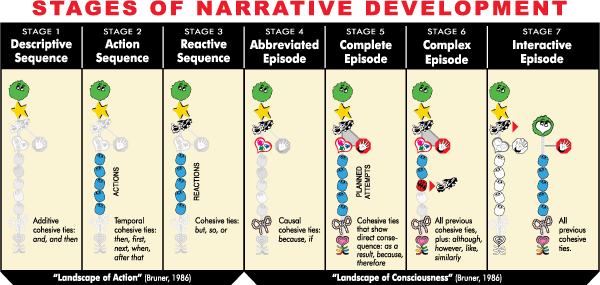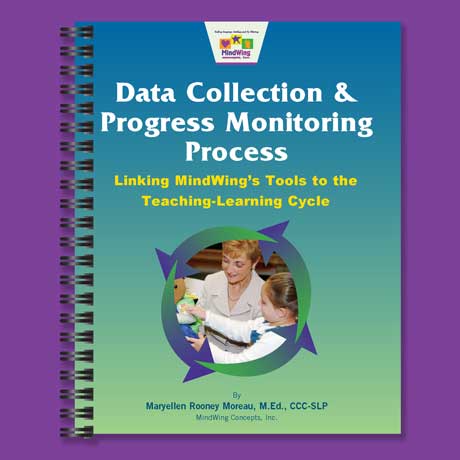Secure Checkout + FREE SHIPPING (U.S. Orders over $60)
Menu
-
- Home
-
About Us
-
The Approach
-
Linking Language & Literacy
-
Professional Learning
-
Learning Resources
-
SHOP
-
Blog
-
- About MindWing
- Our People
- Contact Us
- Your Account
- Login
-
United States (USD $)

Secure Checkout + FREE SHIPPING (U.S. Orders over $60)
Analyze A Narrative Writing Sample
by Maryellen Rooney Moreau May 10, 2016 3 min read
 In a recent blog for Cinco de Mayo, we posted the analysis of the book, Too Many Tamales. (Previous blog.)
In a recent blog for Cinco de Mayo, we posted the analysis of the book, Too Many Tamales. (Previous blog.)
Too Many Tamales is quite complex in terms of its content. The reader needs to be attentive to the illustrations as well as the text itself. Complexity of a text poses challenges to students and instructors alike. There are several measures of complexity of text. They are: Lexile Measures, Qualitative Complexity and Knowledge of the competence of the student as reader/listener in order to match him/her to text and task. (Please see references below for further study.) As instructors and interventionists, we are constantly attentive to these measures. The Lexile for Too Many Tamales is 670L (lexile.com). Lexiles are quantitative measures based on number of words, mean sentence length and semantic difficulty. According to the Lexile, the grade range for this book begins at third and extends to grade six.
Our narrative analysis of Too Many Tamales (download or read previous blog) relates to the two remaining measures of complexity. To demonstrate these two complexity measures, we analyzed Too Many Tamales as a multi-episodic story. This demonstrates the complexity of multiple challenges and goals for a character within a situation: a holiday gathering of relatives. The story is analyzed in four episodes. The analysis of the text itself shows its overall complexity and the multiple teachable moments contained within and across episodes: points of view, shifts of time, multiple characters, multiple challenges to the main character brought about by previous actions.
Too Many Tamales would be classified as a Stage 7 in the narrative sequence.

I often liken this particular story to a “beginning” chapter book because the change in settings/time shift (kitchen, bedroom, kitchen, living room)—with Kick-Offs in each—form the “chapters” (episodes). We analyzed it to show the challenges/problems (Kick-Offs) that the character (Maria) faces throughout the book. There are Attempts to solve the various problems; much of the content relies on the reader/listener’s ability to make inferences and connect elements of story grammar to each other. Please note that the Mother’s “plan” is completely inferred from personal experiences.
References:
Common Core State Standard 10: Range, Quality and complexity. Appendix A.
Fisher, D, Frey, N. & Lapp, D. (2012), Text Complexity: Raising Rigor in Reading. Newark, Del: International Reading (Literacy) Association.
Using our story grammar analysis as a guide, we invite you to analyze third-grade student Emma’s written retelling of Too Many Tamales. Her original written piece is provided below. (You May Download Emma’s Sample Writing Here)
Directions:
For this analysis of Emma’s written expression, we will focus on two criteria: cohesive ties and story grammar components.
- Circle the cohesive ties (conjunctions such as: and, first, later, so, but, because, etc.). These academic vocabulary words tie or connect sentences and ideas.
- Look for the story grammar elements (Character, Setting[s], Kick-Offs, Feelings, Mental States, Plans, Attempts, Direct Consequence, Resolution) and mark them on Emma’s sample. Use our in-depth episodic analysis as a guide.
We will provide our version of the analysis with suggestions for conferencing with Emma, about her written piece, in our next blog.



 Those of you who have our Data Collection and Progress Monitoring Process Manual will find helpful protocols and suggestions within it. The contents of this manual will enable you to:
Those of you who have our Data Collection and Progress Monitoring Process Manual will find helpful protocols and suggestions within it. The contents of this manual will enable you to:
- SELECT areas of concern
- COLLECT data reflecting that concern
- ANALYZE the data, noting areas of need
- INTERPRET the data relative to the specific child
- USE the data to inform instruction!
It is the analysis, interpretation and use of the data that will ultimately make the difference for the child!
Maryellen Rooney Moreau
Maryellen Rooney Moreau, M.Ed., CCC-SLP, is the founder of MindWing Concepts. She earned her Bachelor of Arts degree in Communication Disorders at University of Massachusetts at Amherst as a Commonwealth Honors Scholar, and a Masters of Education in Communication Disorders at Pennsylvania State University. Her forty-year professional career includes school-based SLP, college professor, diagnostician, and Coordinator of Intervention Curriculum and Professional Development for children with language learning disabilities. She designed the Story Grammar Marker® and has been awarded two United States Patents. She has written more than 15 publications and developed more than 60 hands-on tools based on the SGM® methodology. Maryellen was awarded the 2014 Alice H. Garside Lifetime Achievement Award from the International Dyslexia Association, Massachusetts Branch.
Leave a comment.
Comments will be approved before showing up.
